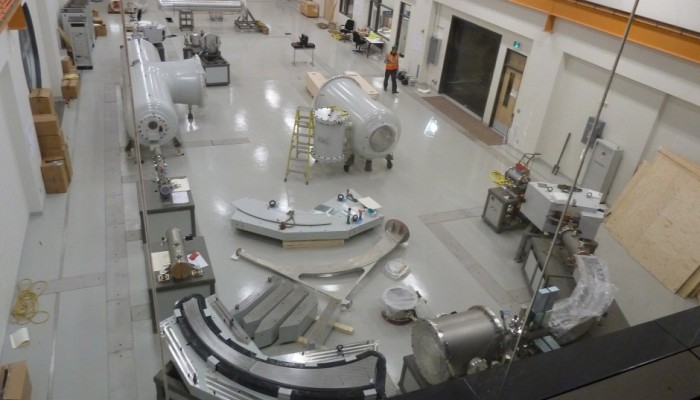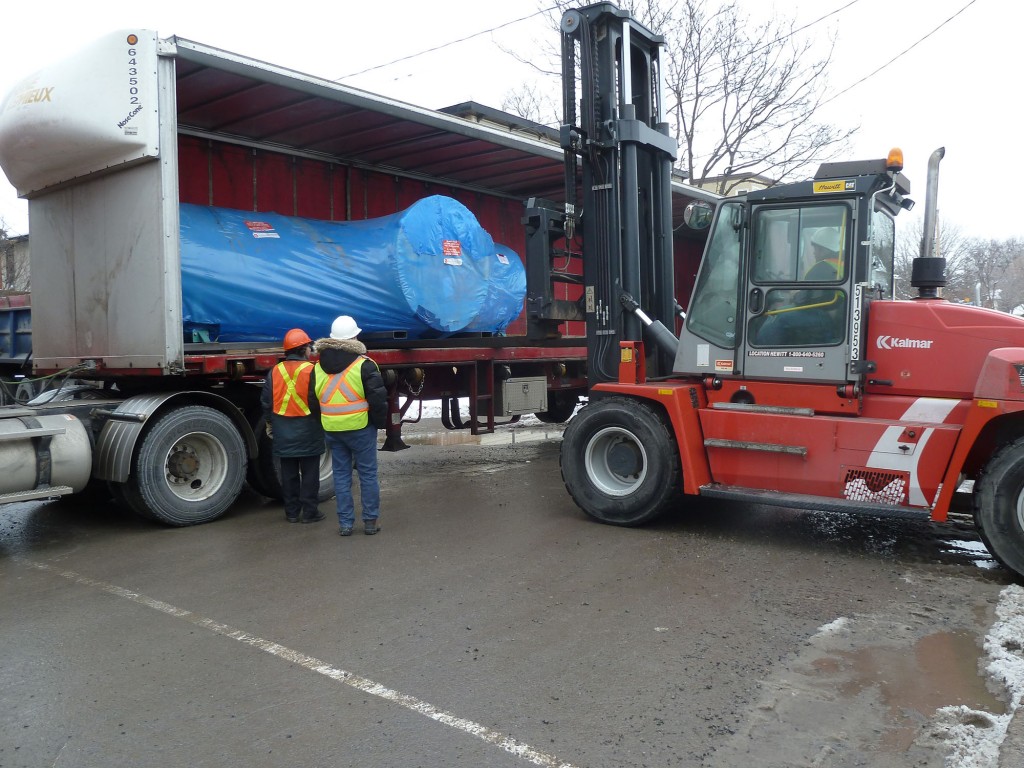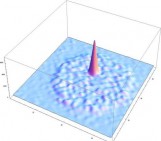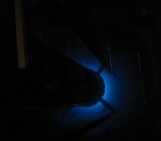
There is a strange phenomenon on the internet called unboxing. Unboxing is when a person receives a new package of something and takes a video or pictures of the process of opening it for the first time and posts it online. Mostly, from what I can see, people “unbox” electronics or hockey cards or things of that nature. However, what I have today could be called the granddaddy of all unboxings; I have a series of photos of the unboxing and, initial stages of set-up of the University of Ottawa’s new, 3 million volt, accelerator mass spectrometer (AMS), which cost 5 million dollars. This takes opening your new laptop or that Sidney Crosby rookie card to a whole new level!!! The AMS will be housed in uOttawa’s new Advanced Research Complex.

The accelerator portion in its shipping container being transferred into our new building. (Photo: Dr. Liam Kieser)
Since I am showing pictures of this incredible piece of equipment being installed I’ll explain a bit about what it is an how it is used as well. I use the AMS in my own work to analyze iodine-129, chlorine-36 and once or twice carbon-14. In short, tools that can be used for groundwater dating. However, the AMS is capable of analyzing for a huge range of isotopes and this allows its use a wide variety of disciplines from health science to homeland security.
The AMS works on the same principles and a regular mass spectrometer, but it has a few key differences that make it extremely powerful.

Once the boxes have been unloaded the building begins. It is like building an IKEA desk, but somehow more… (Photo: Dr. Liam Kieser)
The process of AMS analysis begins with the preparation of the samples, which involves large amounts of lab time in extremely clean conditions. Contamination of samples with unwanted isotopes is a real problem in AMS so great care has to be taken to prepare good samples. The sample is then mixed with niobium powder and pressed into a steel cartridge. The cartridge then gets loaded into the ion source where cesium ions get fired at the sample like shooting a gun. The Cs ions physically break bits of the sample off the cartridge and these get negatively ionized and accelerated out of the ion source towards the first magnet.

Xiao-lei carefully taking the glass rings that are in the accelerator. These are to kill any free electrons that could escape from the stripper canal as well as keep the ions on a stable flight path. X-rays charged to 3 million volts are very bad! (Photo: Dr. Liam Kieser)

The glass rings all put together with the stripper canal in the centre. The stripper canal is where electron get stripped off the negative ions turning them into positive ions as well as keeping the ions on a straight and even flight path. (Photo: Dr. Liam Kieser)
This is what the ion source looks like. Up to 200 samples sit in the big wheel waiting their turn. The AMS control room is those windows in the background.
Once the samples leave the ion source they are accelerated to the first bending magnet which can bend an incredible range of masses. From tritium to plutonium tri-fluoride.
The next step is firing the ion into the particle accelerator that carries a charge of 3 million volts! Inside the accelerator is a passage called a stripper canal that pulls electrons off the ions turning them from negative into positive ions. The reason for this is that this allows us to get rid of interferences that normal mass spectrometers face. For example, chlorine-36 has an interference with sulphur-36 making it impossible to analyse using normal mass specs. Actually, our AMS has another modification that makes 36Cl analysis possible on a 3MV machine, which is generally considered too small for this isotope. Usually, 36Cl needs a much larger accelerator however, our isobar separator for anions (ISA) allows this. Once the ion leaves the stripper canal it is accelerated at very great speed into the next magnet.

This is the biggest magnet I have ever seen!! It is over 3m long and weighs 18 tonnes! This is why the room needs an overhead crane. (Photo: Matt Herod)
Once the ions are redirected and isotopes are further separated by the magnet they are ready to be analyzed in either the Faraday cups for the common isotopes or the gas ionization detector for rare isotopes.

The gas ionization detector. This bad boy literally counts atoms as they come around yet another magnet and through a silicon nitride window. Once they enter the detector which is filled with gas they ionize it which leads to pulses of electricity that are counted. This is the end of the AMS!!! (Photo: Matt Herod)
Once the atoms are counted in the gas ionization detector their trip around the AMS is over! It is quite a journey and full of positives and negatives (haha, a little pun there). Seriously, though this gigantic instrument is used to quantify the smallest of small quantities and can very literally count atoms. The AMS has a massive number of possible uses and I’ll likely be posting about these as this new facility starts to ramp up in the next few months. In addition to the AMS we also have an SEM, microprobe, stable isotope equipment, two noble gas mass spectrometers, ICP-MS, LA-ICP-MS, ICP-AES and a host of other MS’s as well. There will be very few types of isotopes that we cannot analyze for and this facility will be one of the best in the world for this type of geological research. Stay tuned for further developments as we start to move in soon!
Cheers,
Matt












Andre Pellerin
Woah!
Kris
$5M seems pretty cheap for that sort of equipment. The space to house it and staff to operate it costs much more, I assume.
Matt Herod
That was for the machine alone. The space to house and operate has been substantially more!
Sam Morton
Awesome!
Anthony
That’s pretty cool Matt! Be sure to post more photos when it is running.